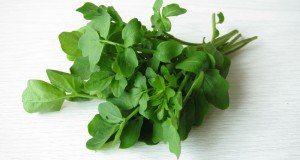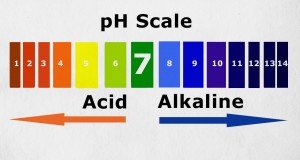Lower blood pressure with the help of olive leaf extract
(Naturalhealth365) According to the U.S. Centers for Disease Control and Prevention (CDC), 75 million adults in the United States have high blood pressure, currently defined as readings over 140/90 mmHg. It’s no wonder they call this the “silent killer.”
This means that one out of every three Americans are at greatly increased risk for heart disease and premature death – with some studies placing the mortality rate for hypertensive adults at a shocking 200 to 400 percent higher than for those who don’t have high blood pressure. In addition, we know that the use of blood pressure medication has many unwanted health consequences.
Fortunately, a new study is shedding light on the ability of olive leaf extract to lower blood pressure, thereby helping to “even the playing field” and lower the odds of early death from this dangerous condition – without negative side effects.
Warning: The ‘standard’ blood pressure guideline for hypertension is too high
Uncontrolled high blood pressure can cause an array of life-threatening conditions – including atherosclerosis, stroke, kidney disease, heart disease, heart failure and heart attack.
Although high blood pressure is officially considered to begin at 140/90 mmHg, many conventionally-trained physicians typically don’t intervene unless readings go much higher – for instance, in the area of 160/90 mmHg.
And this, say many natural health experts, is costing lives.
SHOCKING PROBIOTICS UPDATE: Discover the True Value of Probiotics and How to Dramatically Improve Your Physical, Mental and Emotional Wellbeing with ONE Easy Lifestyle Habit.
The fact is, as blood pressure nears 140/90 mmHg, damage to arteries and organs can already be occurring. (Studies have shown that the risk of heart disease doubles with every 20/10 increase in blood pressure above 115/75 mmHg).
Although blood pressure can be treated with a variety of pharmaceutical drugs, these can feature a variety of unpleasant and dangerous side effects – including swollen ankles, gastrointestinal bleeding, fatigue, dizziness, kidney impairment, excess potassium in the blood and increased risk of heart attack.
But, there may be a better way.
Oleuropein from olive leaves lowers blood pressure safely
Olives and olive oil, rich in healthful monounsaturated fats, have long been important staples of the heart-healthy Mediterranean diet.
But it is the leaves of the Olea europaea tree – used for centuries to treat infections and speed wound healing – that have the highest content of bioactive compounds.
In addition to potent antioxidants such as hydroxytyrosol and oleanic acid, olive leaves contain a phenolic compound called oleuropein.
Studies have shown that oleuropein provides a host of health benefits, including modulating blood sugar, regulating heartbeat, reducing the risk of cancer, fighting inflammation and boosting the immune system.
In addition, research has shown that this beneficial compound helps to combat the arterial stiffness that contributes to high blood pressure – while improving endothelial function and helping to modulate calcium channel flow.
In a double-blind clinical trial published in Phytomedicine, researchers found that oleuropein reduced systolic blood pressure by an average of 11.5 mmHg, and lowered diastolic blood pressure by 4.8 mmHg. (Note: the systolic, or top number, measures the blood pressure during contractions, while the diastolic measures the pressure between heartbeats).
Study results: Olive leaf extract works as well as a prescription blood pressure drug
In a randomized double-blind trial involving 232 participants with hypertension, researchers compared the blood pressure-lowering powers of olive leaf with that of captopril, a pharmaceutical hypertensive drug.
One group received 1,000 mg a day of the olive leaf formulation for 8 weeks, while the other received a standard dose of captopril for the same amount of time.
The researchers found that systolic readings decreased by 11.5 mmHg in the olive leaf group and 13.7 mmHg in the captopril group – leading the team to conclude that the effect of olive leaf was “similar” to that achieved by captopril.
The researchers speculated that olive leaf might work to relax artery walls and lower blood pressure in the same way as prescription ACE (angiotensin-converting enzyme) inhibitors.
And, while captopril can feature side effects such as dizziness and dry cough – the olive leaf extract group experienced no adverse effects.
When it came to decreasing fats in the blood and reducing harmful LDL cholesterol, the olive leaf extract outperformed the prescription drug.
The olive leaf group experienced an average 7.8 percent reduction in triglyceride levels – along with a decrease in harmful LDL cholesterol. The captopril group did not.
Should olive leaf be a part of your blood pressure-lowering regimen?
Natural health experts maintain that a reading of 115/75 mm Hg (when at rest) is a more desirable target reading than the 120/80 mmHg advised by Western medicine.
But how best to achieve this goal – especially if you are battling elevated blood pressure?
Drug-free methods that can help you lower your blood pressure include getting proper nutrition, losing weight, getting sufficient exercise, cutting down on processed salt, avoiding smoking and alcohol and utilizing relaxation techniques such as meditation and deep breathing exercises.
These techniques can help you to take smaller amounts of pharmaceutical medications, or to eliminate them entirely. Of course, never reduce or eliminate your dosage of prescribed blood pressure medicine without first consulting a trusted and knowledgeable integrative physician.
Bottom line, as the latest study suggests, olive leaf extract can be an excellent choice for helping you maintain healthy blood pressure. In case you’re wondering: most natural health experts advise 500 mg of olive leaf extract twice a day for lowering blood pressure.
Remember: if you think olive leaf extract might be for you, discuss the matter first with your doctor.
Sources for this article include:











